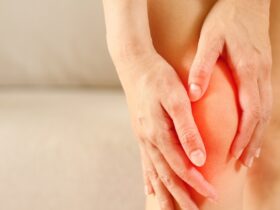Motherhood is an incredible journey, but the postpartum period comes with a range of physical and emotional changes that many women are unprepared for. If you’ve recently given birth and find yourself experiencing discomfort, tightness, or pain during intimacy, you’re not alone.
The postpartum body goes through significant adjustments, and for some women, these changes can affect their pelvic floor health, leading to discomfort during intercourse, tension in the pelvic muscles, and even feelings of frustration or disconnection from their bodies.
Dilation therapy using what are known as pelvic floor dilators is an effective and gentle way to support postpartum healing, helping women regain comfort and confidence after childbirth. Whether you delivered vaginally or via C-section, your body has been through a transformative process, and taking steps to restore your pelvic health is an important part of your recovery.
Understanding Postpartum Pelvic Floor Changes
The pelvic floor plays a crucial role in supporting your bladder, bowels, and reproductive organs. During pregnancy, these muscles stretch and bear the weight of your growing baby. If you had a vaginal birth, the muscles undergo further strain, potentially leading to perineal tears, episiotomies, or other trauma. Even if you had a C-section, pregnancy itself can weaken the pelvic floor and contribute to tension or dysfunction.
One of the most common postpartum challenges is pelvic floor tightness. While some women expect weakness in these muscles, others are surprised to find that their pelvic floor is actually too tight, making penetration uncomfortable or even painful.
This tightness can result from muscle tension caused by anxiety, hormonal changes, or scar tissue from stitches or tearing. Lower estrogen levels postpartum can also contribute to vaginal dryness, further intensifying discomfort.
In addition to physical changes, the emotional impact of childbirth can play a role in pelvic health. Many new mothers experience anxiety or fear around intimacy, especially if they had a difficult birth experience. The anticipation of pain can cause involuntary tightening of the pelvic floor muscles, making intercourse or even tampon use uncomfortable. This cycle of tension and pain can feel discouraging, but it is treatable with the right approach.
How Vaginal Dilator Therapy Supports Healing
Vaginal dilator therapy is a non-invasive and effective way to help the body adjust after childbirth. Dilators are smooth, medical-grade devices designed to gently stretch and relax the vaginal tissues. They come in different sizes, allowing for gradual progression at your own pace.
One of the primary benefits of using vaginal dilators postpartum is that they encourage the muscles to relax. If your pelvic floor has become overly tight due to childbirth-related trauma, stress, or hormonal changes, gentle stretching with a dilator can help restore flexibility and comfort. This process can be particularly beneficial for women who have experienced significant tearing, episiotomies, or scarring, as dilators aid in breaking up restrictive scar tissue and improving circulation in the affected areas.
Another key advantage is that dilator therapy provides a controlled and comfortable way to reintroduce vaginal penetration. Many women feel anxious about resuming intimacy after childbirth, and the ability to practice at their own pace can alleviate some of that fear. By starting with the smallest dilator and gradually working up in size, women can regain confidence in their bodies without pressure or discomfort.
For those experiencing vaginal dryness due to postpartum hormone fluctuations, using a vaginal dilator with a water-based lubricant can improve elasticity and hydration in the vaginal tissues. This added comfort can make a significant difference when transitioning back to intimacy with a partner.
Incorporating Vaginal Dilator Therapy into Your Recovery
If you’re considering vaginal dilator therapy as part of your postpartum healing journey, it’s important to approach the process with patience and self-care. Begin by setting aside quiet, relaxed time for yourself, free from distractions. Using a comfortable position and a small amount of water-based lubricant can make the process more comfortable. Start with the smallest dilator and allow your body to adjust gradually, breathing deeply and releasing tension as you go.
Some women find it helpful to incorporate gentle pelvic floor exercises or relaxation techniques alongside dilator therapy. Deep belly breathing, progressive muscle relaxation, and guided meditation can all help ease tension in the pelvic muscles, making the process smoother and more effective. If you find that using a dilator is difficult or painful, consulting a pelvic floor physical therapist can provide valuable guidance and support.
It’s important to remember that postpartum recovery looks different for everyone. Some women may find relief quickly, while others may need more time. There is no “right” timeline for healing, and progress should be measured based on your own comfort and needs rather than external expectations.
Reclaiming Your Confidence and Comfort
Adjusting to the physical and emotional changes of postpartum life can be overwhelming, but it’s important to prioritize your well-being. If pain, tightness, or discomfort have been affecting your quality of life, know that there are solutions available to help you feel more at ease in your body. Vaginal dilator therapy is a simple yet powerful tool that allows you to take control of your healing process, ensuring that you can move forward with confidence and comfort.
Motherhood is a journey filled with love, challenges, and new experiences. Taking care of your postpartum health is an essential part of that journey. By addressing any discomfort you may be experiencing and seeking solutions that support your well-being, you are giving yourself the same care and attention that you so freely give to others. If you’re struggling with postpartum pelvic pain, don’t hesitate to reach out to a healthcare provider who can help guide you toward the best course of action. Your comfort, confidence, and overall wellness are worth prioritizing.








Leave a Reply